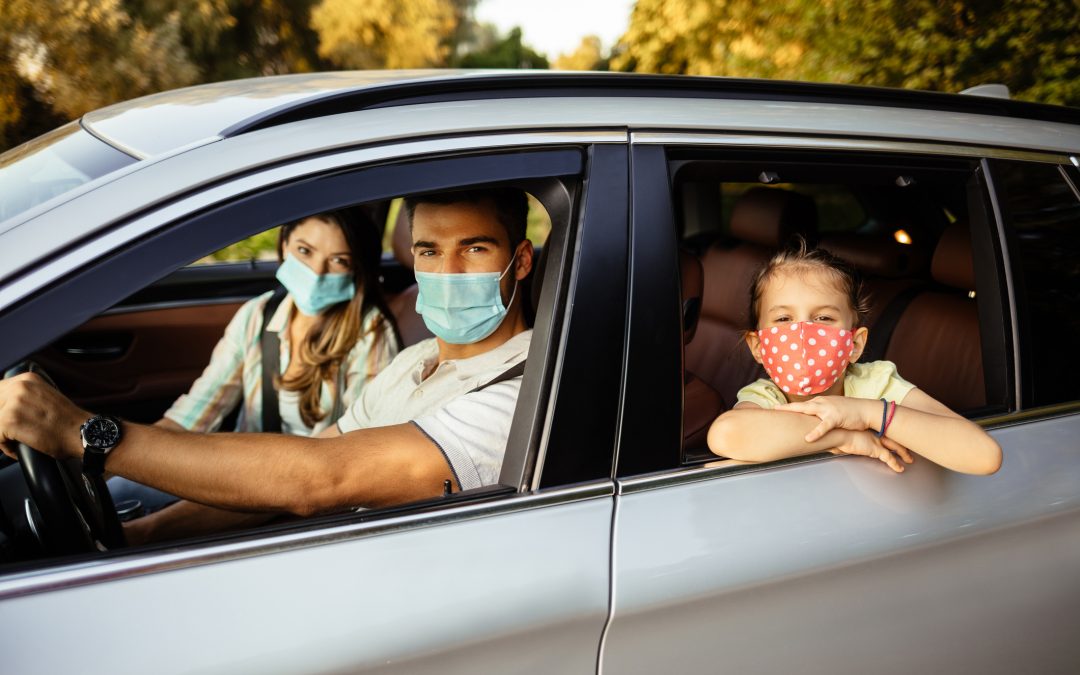Wear your seatbelt. Pay attention. Don’t exceed the speed limit.
To earn your driver’s license, you had to know basic safety rules like these. And as a new driver, you probably followed these rules pretty closely. But do you still?
The data says no. Over the past two years, there’s been a significant rise in the number of car crashes, serious injuries, and fatalities. In the first quarter of 2021, an estimated 8,730 people died as the result of car accidents. That’s over 10% higher than the same period in 2020.
It might be tempting to use COVID as an excuse for these numbers. After all, as work and schools went remote in early 2020, people spent less time on the road. However, even with fewer drivers on the nation’s streets and highways during 2020, the number of traffic deaths spiked.
“This is a crisis,” said United States Transportation Secretary Pete Buttigieg in a USDOT news release. “We cannot and should not accept these fatalities as simply a part of everyday life I America.”
Let’s take a closer look at how driver behavior changed and discuss what we can do about creating safer roads
How Did Driver Behavior Change During the Pandemic?
The AAA Foundation for Public Safety surveys drivers each year to track changes in driver behavior. From 2018 to 2020, the study found that drivers self-report increasing instances of distracted driving each year.
Holding and talking on a cell phone was the distracted behavior with the greatest jump during this time period, rising 16.8 percent. Driving while typing and reading emails and texts also saw a significant increase.
The National Highway Traffic Safety Administration (NHTSA) also reports behavior changes that lead to more serious accidents and injuries. Their data reveals that seat belt use is down, impaired driving is up, and more drivers are exceeding the speed limit each year.
Why the shift to taking more risk? Fewer vehicles on the streets means less or even no congestion, and a reduced need for police presence. Empty roads and no one watching is an invitation many thrill seekers couldn’t resist. But is that the only reason for the rise in fatalities? Unfortunately, the answer is no.
What are the Most Common Causes of Car Crashes?
Technology is at our fingertips everywhere we go, and our cars are no different. GPS navigation, satellite radio, and even adjusting the temperature for our passengers can pull attention away from the road. So, it’s no surprise that distracted driving is the most common cause of motor vehicle crashes in the United States.
And it’s not just technology that distracts us. Eating in the car, checking our hair in the rearview mirror, or watching pedestrians on the sidewalk takes our focus away from driving and sets the stage for an accident. And as a worldwide pandemic has consumed much of our focus, our thoughts sometimes distract us from what’s literally in front of us.
These distractions are challenging enough, but add stress, fatigue, or intoxicating substances to the mix, and you have a recipe for disaster. Due to COVID, stress and fatigue levels have increased for much of the population, and so have the use of alcohol, marijuana, and other recreational drugs.
People are also becoming more aggressive in their driving behavior and exceeding speed limits by higher margins. All of these elements work together to create a dangerous environment for both drivers and passengers.
How Can I Be a Safer Driver?
While driving will always have inherent risks, there are plenty of precautions you can take to anticipate, identify, and avoid road hazards that can cause an accident. These maneuvers can also help reduce the severity of injuries or damage if you are involved in a crash.
- Wear a seatbelt. This is the easiest way to protect yourself. Make sure others in your vehicle are properly restrained as well, including children who need car seats and booster seats.
- Slow down. Always follow the posted speed limit, and remember – it’s a maximum, not a minimum.
- Pay attention. Put down your latte, set your phone to Do Not Disturb, and clear your mind before getting behind the wheel. It can all wait until you’ve reached your destination safely.
- Don’t drive while impaired. Sleepy? Had a few drinks? Call a friend, order a rideshare, or take public transportation. Don’t put your life or anyone else’s in danger.
- Plan ahead. If the weather’s bad or you’re driving in an unfamiliar area, give yourself extra time to reach your destination.
Above all, recognize that driving is a privilege, not a right, and that you have a responsibility to protect yourself, your passengers, and those around you every time you travel.
How Can Defensive Driving Help?
While we’ve outlined a few guidelines here to help you be a safer driver, one of the best strategies for improving your skills is to take a defensive driving course. Defensive driving will help you prepare for situations you may encounter while on the road. Knowing how you’ll handle risky situations before they arise could be the difference between life and death.
DriveSafe Online wants to be your partner in keeping you safe behind the wheel. Our courses use drone footage to offer unique real-world perspectives so you can see the big picture and know how to safely handle risky situations. We’ll help you brush up your skills and learn new techniques to become a better, safer driver.
Plus, your course completion certificate could earn you a defensive driving discount from your insurance provider. Call your agent to find out how much money you could save.
You can trust us. We’ve been creating online learning courses for more the 25 years. We have customer support staff waiting to answer questions you may have. When you choose us, you know you’re getting the best. That’s why Drivesafe Online was named “Best Overall Online Defensive Driving Course for 2021” by Investopedia.
Take a course demo or contact us about special opportunities for training your fleet drivers.

Patrick M. is Editorial Director for the always expanding DriveSafe Online library of courses. With over two decades of experience developing award-winning training, he now focuses on innovating online driver safety training. Pulling from his background in journalism, he steers the wheel behind the creation of top-tier content that promotes a better journey—whether on the digital highway of learning or the real roads we travel every day.
